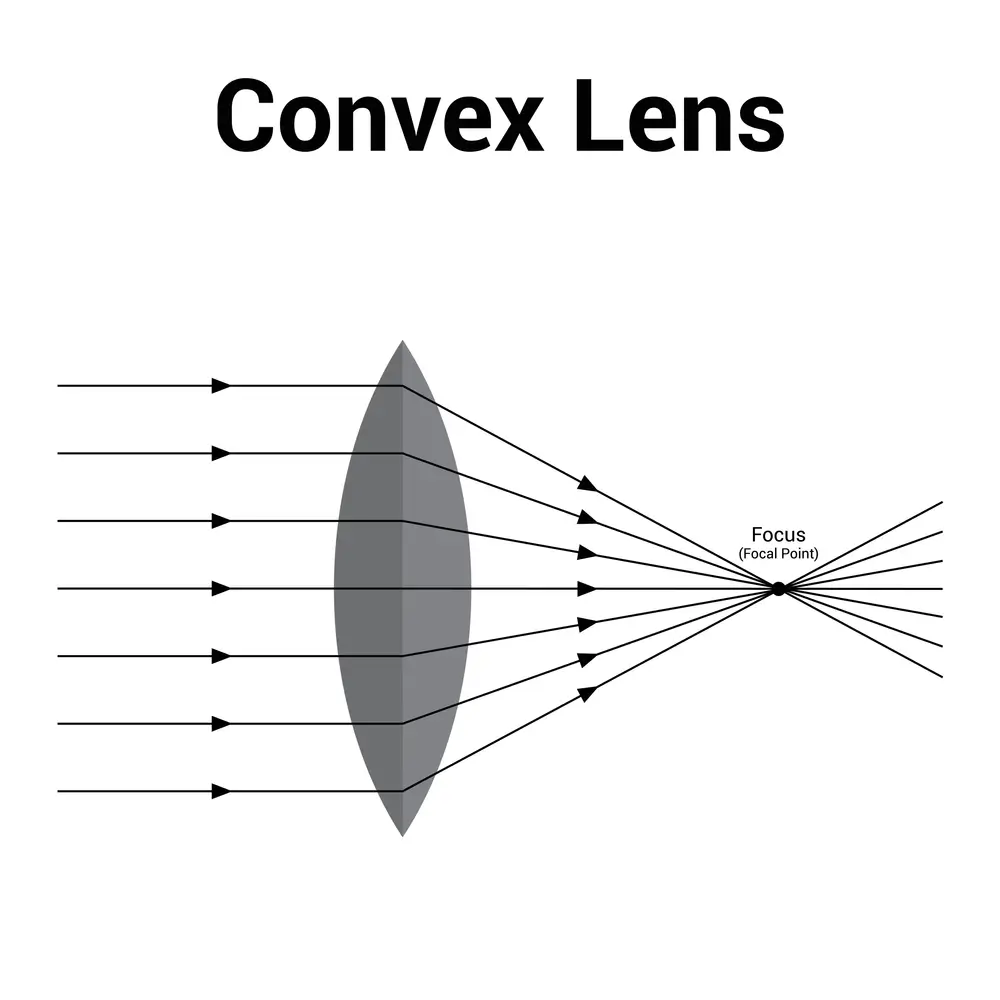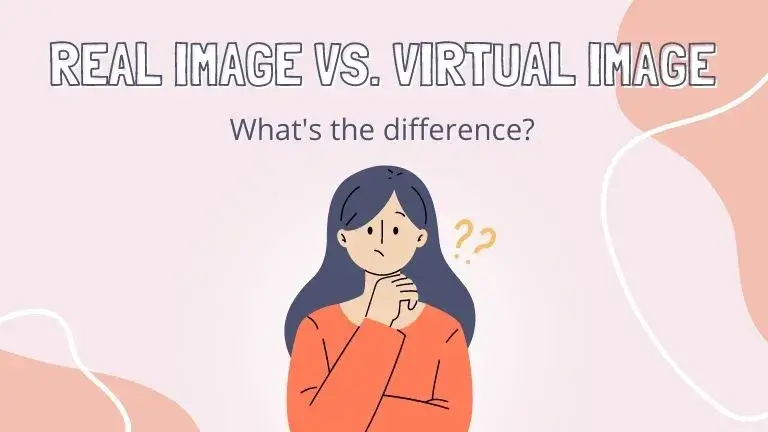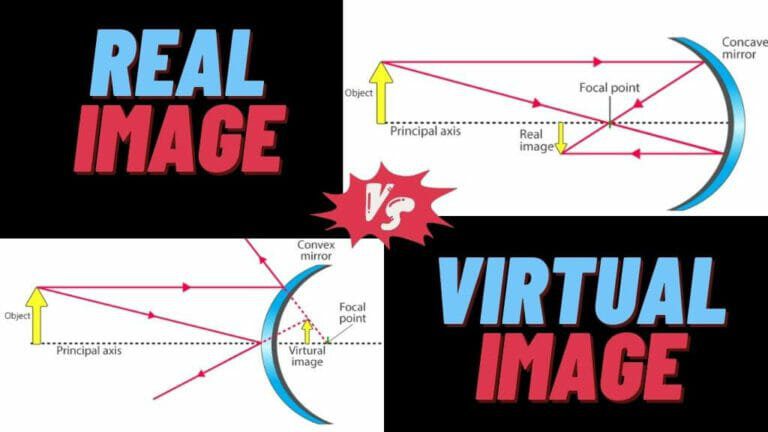According to optics, an image of an item is created when a light beam is refracted or reflected after striking it. But we typically see two different types of images in our daily lives. Both real and virtual images.
The difference between real images and virtual images is that real images are inherently inverted. Whereas, virtual images, however, are consistently upright.
Now let’s understand deeply definitions of real and virtual images given below:
Table of Contents
What is a Real Image?

When light rays converge to create an image, as with a convex lens or concave mirror, a “real image” is created. Onto a screen, an actual image may be projected.
A real image is created when light rays that have been refracted or reflected truly come together in a single place. A concave mirror and convex lens combine to create a real image that may be captured on a screen.
Real images are created where light rays interact with one another. On the screen, real images seem inverted, just as they do in reality.
Example of Real Image
The image on the movie screen while the object is being projected on it with the help of a projector is the most typical example of a real image. This mirrors the image on the screen, which depicts the thing that the human eye is supposed to see.
What is a Virtual Image?

Firstly, “virtual” is just a fancy way of saying “nearly” in computer science and electrical engineering. For instance, a combination of technology and software called “virtual reality” (nearly reality) simulates reality.
Virtual images are “nearly images,” to use the technical term. Optics, a subfield of electrical engineering, uses the word “virtual image” (or Physics). The term “virtual image” describes an image that, while not truly existing, appears to do so.
For instance, let’s say you are looking in a mirror and notice a bottle there. The bottle that appears in the mirror is a reflection of the bottle in front of the mirror. “Virtual image” refers to the reflection you see in the mirror.
When light rays that have been refracted or reflected diverge, a virtual image is created. When light from an item is allowed to reach the mirror in this situation, and when light rays are reflected from the mirror, it appears like the rays are diverging behind the mirror.
Example of Virtual Image
The clearest example of a virtual image is a reflection in a mirror. Real images can be displayed on a screen, whereas virtual images cannot change due to two opposing lenses that are concave and convex from the real images.
Difference Between Real and Virtual Images

There are many differences between real images and virtual images, given below:
The primary difference between real and virtual images is that a virtual image cannot be captured on a screen, while an accurate image can be captured on screen.
Another difference between real images and virtual images is that a real image is created when light rays that have been reflected or refracted truly come together at a spot.
On the other hand, a virtual image is created when the same light rays only appear to come together at a point.
In comparison between virtual vs. real image, a real image is created when light rays actually cross paths, whereas a virtual image is created when light rays hypothetically cross paths.
Another comparison between virtual vs. real image is that a virtual image can only be viewed in the mirror; a real image can be created on a screen.
The difference between real and virtual images is that only a concave mirror may make a real image; flat, convex, and concave mirrors can also create virtual images.
Real Vs. Virtual Image
Real and virtual pictures are the two sorts of images that exist in optics.
The point of actual intersection of these light rays, which occurs when they emerge from an object after reflection or refraction, is referred to as the real image of the object.
The virtual intersection point where the light beams from an object diverge and appear to meet after experiencing reflection or refraction is known as the virtual image of the object.
In comparison between real vs. virtual images, real images are flat, two-dimensional projections (from a screen), and virtual images are three-dimensional simulations that can only be experienced in the imagination.
Depending on your point of view, when you look at a real thing, you see a virtual representation that you alone can see. While you also see the image in your head, real images appear the same to everyone, regardless of their viewpoint.
Relationship Between Real and Virtual Image
Adding a small, powerful light bulb to the source makes it possible to determine the link between real and virtual images.
Because the light beams from the source converge at the real image’s spot, if you place your palm close to it, it will burn.
Furthermore, since there are no light rays, even if you insert your palm inside the virtual image, it won’t burn.
What are the Differences Between Real Images and Virtual Images?
Highlighting the main differences between real images and virtual images in the following table:
| Real Image | Virtual Image |
|---|---|
| Real images form on the mirror’s front side. | On the mirror’s back, virtual images are thought to appear. |
| Real images use a converging lens. | Virtual images use a diverging lens. |
| Real image appears to be inverted. | Virtual image appears to be erect. |
| In the real image, the interaction of ray’s light is actual. | In a virtual image, interaction of ray’s light is imaginary. |
| Example: Image displayed in a theater. | Example: Anybody or thing reflected in a plane mirror. |
Conclusion
The reflection property of light is what creates the picture of an item when it is placed in front of a mirror.
The difference between real images and virtual images is that the virtual image is the reflection that develops behind the mirror.
On the other hand, the real image is what appears on the screen.
A plane mirror’s produces image serves as an example of a virtual image and real images are examples that are produced on the retina in our eyes.
See more: What is the Difference Between Exhalation and Inhalation?


